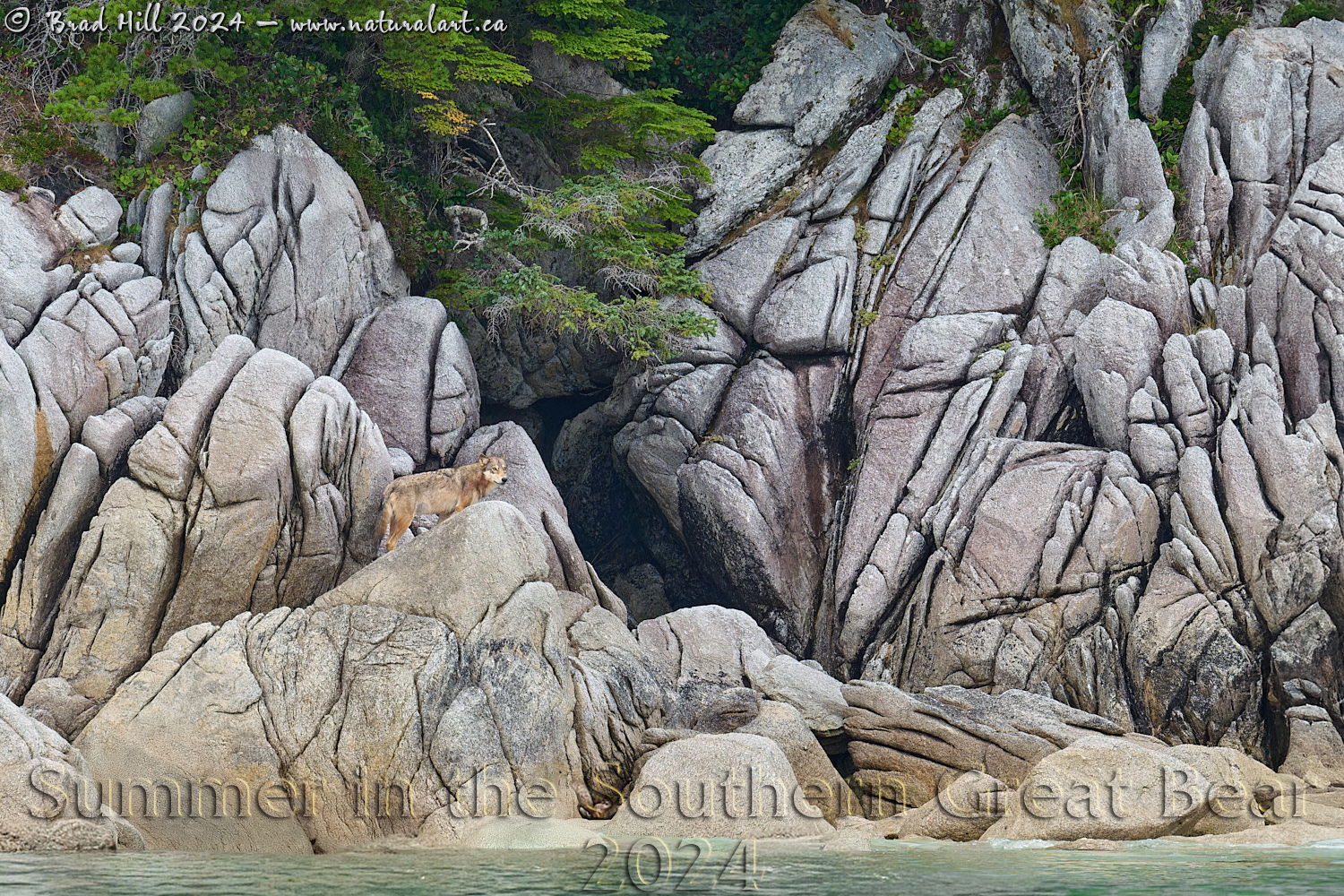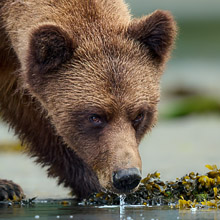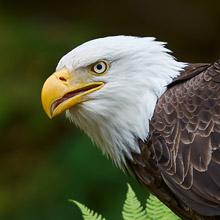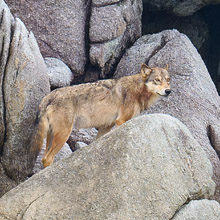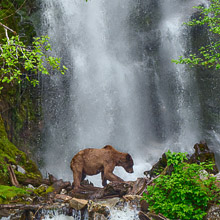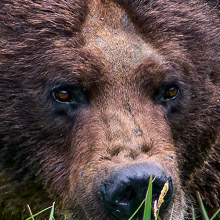Availability: Undetermined - Enquiries?
In the Field
A Rocky Wolfscape. Great Bear Rainforest, British Columbia, Canada. August 24, 2024.
Although I like the thrill of shooting compelling close-up portraits of wildlife subjects as much as the next photographer, I have to admit that my preferred wildlife image style is the animalscape where the subject is only a part (and often a small part) of the overall scene. This is one of the first shots I captured of this wolf (and the other members of the family it was part of) during my 2024 "Summer in the Great Bear Rainforest" exploratory photo adventure. At the time I thought it was likely to be the only shot I would capture of the wolf/wolves - happily it turned out I was very wrong! 😉
Whenever I discuss animalscape shots it seems a lot of folks think I'm referring to shots captured with short(er) focal length lenses. I have captured a FEW animalscapes over the years with lenses of 100mm or less, but far more often I use much longer focal lengths. Probably my most common focal length range used for animalscapes is 300-400mm, but occasionally I shoot them with considerably longer lenses, like 600mm lenses. This particular shot was actually captured with an 800mm lens (my Z 800mm f6.3S).
Capturing interesting animalscape shots with long focal length lenses requires a couple of things. First, when you first see your subject at long distance you have to actively discard your instinct to find a way to "get closer"! Often you might just be looking at the "scene of the day" (or "photo of the trip") already! Second (and related to the first point) is being able to visualize just how that long-distance scene you're looking at will render with your longer lenses. Whenever I see a subject in the distance I begin evaluating/thinking about how it would look with the long lense(s) I have with me at the time, which may be anything from 200mm to 800mm. And while I'm doing that visualizing I'm not just thinking about my subject - I'm thinking about the field of view I'll have with the longer lens, what's in the foreground, what's in the background, and a whole lot more (sometimes even including what I'll be able to do with the scene during post-processing). Shooting animalscapes IS really, really challenging (in my opinion much more so than shooting close-ups) but I find it incredibly rewarding!
I have an entire gallery on this website dedicated to animalscapes (check it out here) and I am pretty sure this image will find its way into that gallery before long!
Here's a larger version (4800 pixel) of this very rocky animalscape:
• A Rocky Wolfscape: Download 4800 pixel image (JPEG: 10.5 MB)
ADDITIONAL NOTES:
1. These images - in all resolutions - are protected by copyright. I'm fine with personal uses of them (including use as desktop backgrounds or screensavers on your own computer), but unauthorized commercial use of the image is prohibited by law. Thanks in advance for respecting my copyright!
2. Like all photographs on this website, these images were captured following the strict ethical guidelines described in The Wildlife FIRST! Principles of Photographer Conduct. As such, no baiting or any form of attractant was used and, as always, we attempted to minimize our impact on the ongoing behaviour of the subjects. I strongly encourage all wildlife photographers to always put the welfare of their subjects above the value of their photographs.
3. This image was captured during my Grizzlies of the Khutzeymateen Photo Op photo tour in late spring of 2025. Each year I offer trips into the Great Bear Rainforest as well as tours into the Khutzeymateen Grizzly Sanctuary (to photograph grizzlies, of course!). Details about these trips can be found on the Photo Tours page of this website.
Behind the Camera
A Rocky Wolfscape. Great Bear Rainforest, British Columbia, Canada. August 24, 2024.
High Efficiency* Compressed RAW (NEF) format; ISO 4500.
Nikon Z 9 paired with Nikkor Z 800mm f6.3S. Hand-held from a floating Zodiac inflatable boat. VR on in Sport mode. 3D-tracking AF area mode with subject detection on "Birds" mode
1/1250s @ f6.3; No compensation from matrix-metered exposure setting.
At the Computer
A Rocky Wolfscape. Great Bear Rainforest, British Columbia, Canada. August 24, 2024.
Initial noise reduction and capture sharpening on the .nef (raw) file using the DeepPRIME XD2S algorithm of DXO PhotoLab 8.7 Elite (using the appropriate lens/camera optical module).
Subsequent adjustments to the adjusted linear DNG file (exported from PhotoLab) and conversion to 16-bit TIFF file (and JPEG files for web use) - including all global and selective adjustments - made using Capture One Pro (build 16.4.6). In the case of this image the only global adjustments were tweaks to overall contrast (using the Levels tool) and small tweaks to the highlights and blacks. Selective local adjustments performed using Capture One Pro's layers and masking tools. In this case numerous small adjustments and minor tweaks were made on 3 separate layers, with the tweaks being associated with "exposure balancing" and contrast adjustments (such as adjustments to brightness, clarity, highlights, shadows, etc.).
Photoshop modifications included insertion of the watermark and/or text.
Conservation
A Rocky Wolfscape. Great Bear Rainforest, British Columbia, Canada. August 24, 2024.
Species Status in Canada*: Only Eastern Wolf listed as species of "Special Concern" in May, 2001. Other populations not listed as Endangered or Threatened.
Probably no species alive today has suffered as much direct persecution from humans as has the Gray Wolf (Canis lupus). Once extremely widespread in North America, the Gray Wolf was virtually extirpated from the contiguous 48 states of America and now is regularly found within only a fraction of its historical range in Canada. While the Gray Wolf is currently listed as endangered in most of the 48 lower states of the United States and enjoys the privileges associated with such status (if lack of persecution and abuse can be thought of as a privilege), it is still official policy in much of Canada to rid the countryside of this magnificent keystone predator. As an example, in British Columbia, there is NO closed season on the wolf in most hunting jurisdictions and opportunistic slaughter is encouraged by policy (it is the ONLY fur-bearing species for which NO species hunting tag is required in British Columbia!). Conservation of wolves presents a puzzling paradox. Reduced to the most basic principles, wolf conservation is simplistic: we need only to stop persecuting this species in order for it to survive. Yet accomplishing this invariably proves incredibly difficult - it's as though wolf persecution has been institutionalized directly into government (and societal) bureaucracy.
*as determined by COSEWIC: The Committee on the Status of Endangered Wildlife in Canada













